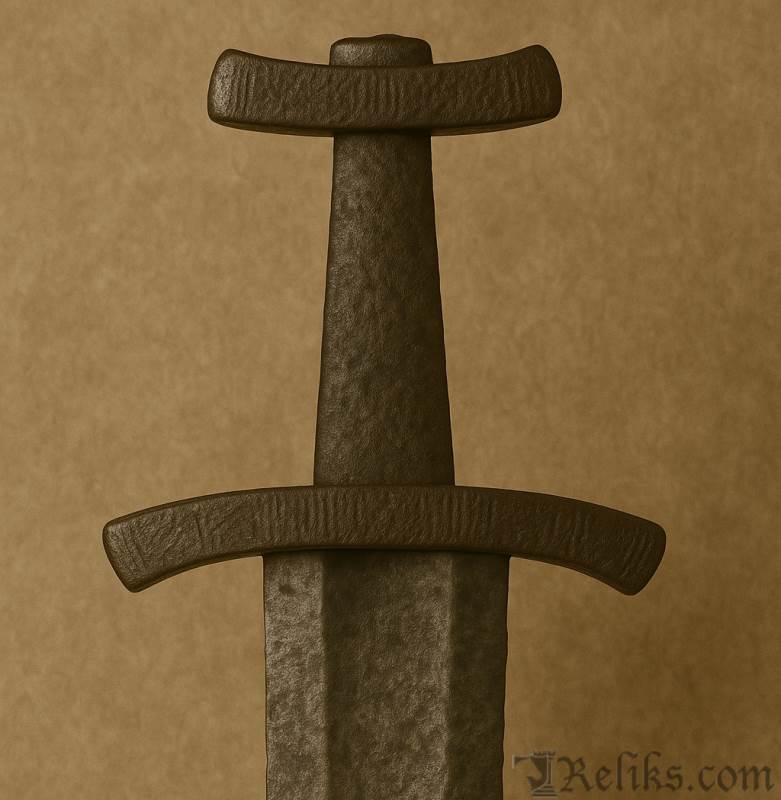Viking Sword Type P (Early 10th Century)
Defining Features
Type P swords are immediately recognizable by their lack of a pommel. Instead, they feature slightly bowed guards, sometimes with gentle expansions at the ends. A hallmark detail is the upper guard, which often rises into a subtle central peak, giving the sword a distinctive but restrained silhouette.
Unlike the plainer M-type, P-type guards were always clad in metal, typically silver or bronze. Their ornamentation is modest — usually simple engraved lines or branching stripe patterns. One notable outlier, a sword from Kirkhus in Hjelmeland, carries intricate band-braiding designs similar to those found on Type O swords, though it otherwise lacks the end flares or peaked upper guard. The guards of Type P are generally taller and heavier than those of the types that came before and after, reaching up to 2.4 cm in height. Upper guards average 7–9 cm in length, with lower guards extending to 10–12 cm.
Distribution and Examples

Type P swords are immediately recognizable by their lack of a pommel
Petersen identified only seven examples of this type in Norway, making it among the rarer Viking sword forms. Known finds include specimens from Buskerud, Vestfold, Rogaland, Sunnhordland, Romsdal, and Trøndelag. All surviving blades are double-edged, and at least two (from Lier and Inderaen) display pattern-welding, though none bear inscriptions.
This was largely a coastal type, with swords scattered across southern and western Norway, rather than concentrated inland. Its rarity suggests it may have been a specialized or transitional form rather than a widespread standard.
Dating and Archaeological Context

Petersen (fig.109)
Type P swords belong firmly to the early 10th century. Grave finds consistently associate them with other weapons typical of this period: spearheads of Type I, axes of I- and H-forms, and younger rattles. One remarkable double burial from Haus contained a Type P sword alongside a sword of the later X-type, underscoring its place in a period of transition.
In one case, a sword was found with oval brooches of the R 652 type — a style securely dated to the early decades of the 10th century. These associations leave little doubt that the P-type was in use during the first half of the 900s, though it does not appear to have survived long beyond that.
Interpretation
The P-type can be seen as an evolutionary branch between the richly decorated K and O swords and the simplified Q-type. Its reliance on metal plating and its carefully balanced, slightly peaked guards suggest it was intended as a refined but restrained prestige weapon. Unlike the highly elaborate O-types, however, P swords avoided flamboyance, favoring consistent, harmonious forms.
Because of their rarity and coastal distribution, these swords may represent imports or imitations of foreign designs, adapted to local tastes. They also reflect the growing experimentation of the early 10th century, when Viking smiths balanced tradition with innovation in sword design.
Core classification based on Jan Petersen, De Norske Vikingesverd (1919). Additional commentary by Reliks.com.